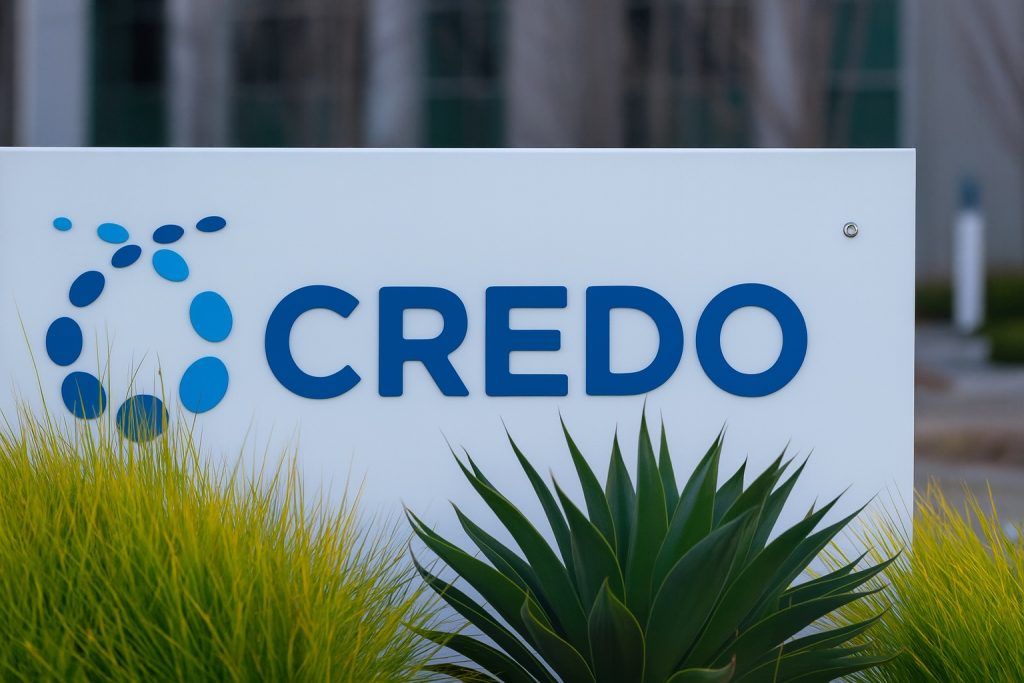- Current Price: PNC Financial Services (NYSE: PNC) stock trades around $189–$190 as of October 15, 2025, roughly flat year-over-year (down only ~0.1% in the past 12 months) [1]. Shares closed at $189.73 after the latest session [2].
- Q3 Earnings Beat:PNC reported Q3 2025 earnings of $4.35 per share, beating Wall Street’s $4.04 estimate by $0.31, with revenue of $5.92 billion topping forecasts (consensus ~$5.83 billion) [3]. However, net interest income (NII) guidance for Q4 came in softer than expected – management projects only ~1.5% growth QoQ – which tempered enthusiasm [4].
- Stock Oversold Recently: PNC’s stock pulled back sharply in recent days amid broad market volatility. It briefly entered oversold territory last week with a 14-day RSI near 21 [5] after a global sell-off triggered by renewed U.S.-China trade tensions.
- Analyst Upgrades:Analysts are turning bullish. Piper Sandler upgraded PNC to “Overweight” (from Neutral) and raised its price target to $220 (up from $211) ahead of earnings [6]. That target implies ~15% upside and is based on ~12× the firm’s 2026 EPS estimate, reflecting confidence in PNC’s fundamentals [7]. Other major banks have also hiked their targets – e.g. Wells Fargo now sees $240 and Bank of America $226 for PNC [8]. The stock carries a consensus “Moderate Buy” rating with an average price target around $218 [9].
- Solid Fundamentals: PNC’s core business trends remain healthy. The bank has delivered consistent loan growth, prudent credit management, and stable operating performance [10]. Q3 net income was $1.8 billion (EPS $4.35), and while credit costs ticked up (net charge-offs rose to ~$280 million in Q3 vs. $198 million in Q2), analysts note this was anticipated and within manageable levels [11]. Management’s cautious outlook is viewed as conservative and achievable – Piper Sandler notes PNC often outperforms its guarded forecasts [12].
- Sector Context: The broader banking sector backdrop is mixed. Major banks like JPMorgan, Citigroup, and Wells Fargo kicked off earnings season with strong results, buoyed by high interest rates expanding net interest income [13]. PNC’s own NII rose in Q3, though just shy of consensus [14], and the bank guided for only modest NII gains ahead. Meanwhile, investors are grappling with macro headwinds – the Federal Reserve’s data-dependent stance on rate cuts and renewed U.S.-China trade tensions have rattled markets [15]. These factors contributed to recent volatility in bank stocks, including PNC.
Current Stock Performance & Technical Signals
As of mid-October 2025, PNC stock is trading around the $190 level, having recovered from a brief dip into the mid-$180s. The share price is roughly 3.5% lower over the past quarter and basically flat compared to a year ago [16], underperforming the S&P 500 during that span. The stock is about 12% below its 50-day moving average (~$198), reflecting recent weakness, but remains above its 200-day moving average (~$183) – a sign it’s still in a longer-term uptrend off last year’s lows. PNC’s 52-week trading range spans $145.12 to $216.26, so at ~$190 the stock sits well off its highs but far above its bear-market depths [17].
Momentum indicators suggest the sell-off may be overdone. PNC’s relative strength index (RSI) plunged into the low-20s last week – well below the threshold of 30 that signals oversold conditions [18]. (For context, an RSI of 21 is exceptionally low, indicating intense recent selling pressure.) Such an extreme reading often precedes a relief bounce if fundamental news improves. Indeed, analysts note the oversold signal could spark a rebound if broader market stressors ease and PNC’s fundamentals stay intact [19]. The stock’s slide appears to have been driven largely by macro jitters, not a deterioration in PNC’s own financial health.
Near term, traders are watching whether PNC can hold support around the $185–$190 zone, which roughly coincides with recent lows. A break below $183 (the 200-day MA) would be technically bearish, but if the stock stabilizes and clears back above ~$198 (50-day MA), it could regain positive momentum. Market technicians point out that PNC’s sharp drop came on high volume amid trade-war headlines, suggesting a capitulation-like move. With the Dow Jones banking index rebounding and volatility subsiding somewhat, PNC could see a short-term rally off these oversold levels – especially given the fundamentally positive news just released in its earnings report.
Q3 Earnings: Beat on Profits, Cautious Outlook on Interest Income
PNC delivered better-than-expected Q3 results, providing a fundamental catalyst for the stock. The bank reported diluted EPS of $4.35, comfortably topping analyst estimates of about $4.04 [20]. Net income was approximately $1.8 billion for the quarter. Revenue came in at $5.92 billion, also ahead of the ~$5.83 billion consensus [21], reflecting solid growth in both interest and fee income streams. This marks another quarter of year-over-year revenue improvement (roughly mid-single-digit percentage growth) [22], showcasing PNC’s ability to expand despite a mixed economic climate.
Notably, PNC’s net interest income (NII) – the core driver of bank earnings – grew on a yearly basis as loan balances and yields increased. However, NII of about $3.65 billion (reported) was just shy of analyst forecasts, and PNC’s guidance struck a cautious tone. On the earnings call, management guided for only ~1.5% sequential growth in NII for Q4 (implying roughly $3.70 B in Q4 NII) [23]. This subdued outlook disappointed some investors, as the market had hoped for more robust tailwinds from high interest rates. In fact, PNC’s stock slipped about 3% in pre-market trading after the report, with traders reacting to the softer NII guidance even as headline earnings beat expectations [24]. Executives explained that higher funding costs (what PNC pays on deposits) and an anticipated moderation in loan growth are likely to cap NII expansion in the very near term.
Aside from interest income, credit quality is a focal point. PNC’s Q3 provisions for credit losses and net charge-offs did increase from unusually low levels last year, aligning with industry trends as loan portfolios normalize post-pandemic. The bank recorded $275–$300 million in net charge-offs for Q3 (up from $198 M in Q2) as some consumer and commercial borrowers struggled [25]. However, this level remains manageable and was fully expected – PNC had telegraphed higher credit costs in guidance. Analysts note that PNC’s credit metrics are still healthy and that the bank has historically outperformed its own conservative loss forecasts [26]. In other words, management tends to guide cautiously on credit (and interest income), then beat those low bars, a pattern that seems to be repeating.
Fee income segments offered mixed results. While PNC’s consumer banking fees and asset management revenues were steady, areas like residential mortgage banking saw headwinds from a slower housing market (an industry-wide theme). Operating expenses were well-controlled, helping support a strong efficiency ratio for the quarter. Bottom line: PNC’s fundamental performance in Q3 was solid – core earnings beat, revenue grew, and expenses were contained – but the market fixated on the guarded outlook for Q4, leading management to strike a balance between optimism and prudence.
Wall Street Sentiment: Upgrades and Forecasts from Analysts
Despite recent stock underperformance, sell-side analysts are increasingly positive on PNC’s prospects. The most notable vote of confidence came from Piper Sandler, whose banking analyst R. Scott Siefers upgraded PNC to “Overweight” on October 9 [27]. Piper also lifted its price target to $220 (from $211), which implies roughly 15% upside from current levels [28]. Crucially, that target is based on about 12× PNC’s expected 2026 earnings – Piper projects PNC will earn approximately $17.81 per share in 2026, and even more ($19.10) in 2027 as growth continues [29] [30]. The upgrade reflects a view that PNC’s fundamentals are stronger than its stock performance suggests: the shares had been “largely flat” year-to-date and lagging peers despite solid financial results [31], leaving what Piper calls an “attractive” valuation around 11× forward earnings [32].
According to Piper Sandler’s note, investor sentiment toward large banks has improved heading into this earnings season, and PNC’s underperformance presented a buying opportunity [33]. The analysts cited multiple positives: steady loan growth, prudent credit management, and a robust operating trend underpinning PNC’s earnings power [34]. They also highlighted PNC’s strategic moves – notably the pending acquisition of FirstBank (a Colorado-based bank) – which will add scale in key markets, low-cost deposits, and cross-selling opportunities once closed [35]. Piper believes this deal, along with PNC’s strong capital position, positions the company for superior growth relative to many regional banks. In their view, management’s guidance is appropriately conservative (as evidenced by the cautious NII outlook) and therefore likely to be met or exceeded [36]. Overall, Piper Sandler’s call signals confidence that PNC’s earnings trajectory and franchise value are not fully reflected in the current share price.
Other Wall Street firms echo this optimism.Wells Fargo recently reaffirmed its bullish stance, raising its price objective for PNC from $230 to $240 while maintaining an Overweight rating [37]. Bank of America likewise bumped its target to $226 and calls PNC a Buy [38]. In September, Raymond James boosted its target from $220 to $225 with an Outperform rating, and Truist Financial nudged its target to $210 (though Truist kept a more cautious “Hold” rating) [39]. The upshot is that price targets have been migrating higher across the board as analysts factor in PNC’s resilience. According to MarketBeat data, the stock now garners 14 Buy ratings (plus 1 Strong Buy) against 6 Holds and just 1 Sell – giving it a consensus rating of “Moderate Buy.” The average price target is about $218 per share [40], ~15% above the latest trading price, which suggests broad expectations of upside.
Importantly, analysts underscore PNC’s fundamental strength. The company’s return on equity and profitability metrics remain healthy, and its capital levels comfortably meet regulatory requirements (Common Equity Tier 1 ratio is strong). Piper Sandler specifically noted that PNC’s valuation discount to peers should prove temporary – historically PNC traded at a premium thanks to its high-quality franchise, and that premium could return as the bank continues to execute [41]. Still, the bull case is not without risks: Piper and others caution that potential headwinds – such as deterioration in the economy or credit quality, rising expenses, or ill-timed acquisitions – could weigh on the stock [42]. For now, though, the expert commentary tilts positive: PNC is viewed as a well-run regional lender that’s positioned to weather near-term challenges and thrive in the medium term.
Broader Banking Sector & Market Context
PNC’s outlook can’t be divorced from the broader banking and economic environment. This week’s earnings reports from industry giants have set a constructive tone: JPMorgan Chase, Citigroup, and Wells Fargo all posted stronger-than-expected Q3 profits, citing robust consumer spending, higher net interest margins, and solid loan demand [43]. Those results suggest that the banking sector overall remains healthy, benefiting from the past year’s interest rate hikes which allowed banks to earn more on loans. PNC, as one of the largest regional banks, is riding many of the same tailwinds – elevated interest rates have expanded its interest income (albeit at the cost of higher deposit rates paid out), and loan growth has been modest but positive. The bank’s 7% net interest income growth target for 2026 indicates management sees a multi-year runway for revenue expansion as assets reprice at higher yields [44].
That said, investors are also weighing macro-level headwinds. One concern is the trajectory of Federal Reserve policy. Fed Chair Jerome Powell has recently emphasized a “data-dependent” approach to rate cuts, suggesting the Fed is not ready to ease aggressively until inflation convincingly trends down [45]. If interest rates peak and begin to decline in 2025–2026, banks could see net interest margins compress from current highs. On the flip side, an eventual rate cut cycle might stimulate loan growth and reduce funding costs – a mixed bag for banks like PNC. Inflation data and Fed signals in coming months will therefore be key for the sector. PNC’s management noted that they are positioning for a possible peak in rates, focusing on controlling deposit costs and growing fee income to offset any margin pressure.
Another overhang is the U.S.-China trade tension and its ripple effects on markets. In the past week, headlines about tariff escalations have injected volatility. President Trump’s surprise threat of a 100% tariff on Chinese imports (in response to China’s export controls on rare earth minerals) sent shockwaves through equities [46]. The Dow plunged nearly 900 points on that news, and financial stocks, including PNC, sold off sharply. Banks are sensitive to such macro shocks because trade disputes can hurt business confidence and credit conditions. Additionally, the U.S. faced a potential government shutdown scenario recently, which added another layer of uncertainty for markets until a resolution was in sight [47]. These macro issues contributed to the risk-off sentiment that dragged PNC’s stock lower in early October.
In the banking sector specifically, investors are closely watching credit trends and regulation. Thus far, consumer credit quality has softened only gradually – PNC and peers report that while charge-offs are rising from historic lows, they remain at manageable levels. A strong labor market has helped consumers and businesses continue paying loans on time, but if the economy slows, banks could see credit losses climb more quickly. Regulators are also eyeing capital requirements, especially after some regional bank failures in 2023. There is talk of higher capital buffers for larger regionals like PNC, which could constrain dividend and buyback capacity. PNC appears well capitalized currently, but any regulatory changes will be on investors’ radar.
Overall, the market context for PNC in October 2025 is one of guarded optimism. The banking industry is profitable and far more stable than during past crises, yet investors remain vigilant. High interest rates are a boon for earnings now, but banks must navigate the eventual normalization. Geopolitical and policy risks (trade wars, fiscal showdowns, Fed pivots) are adding short-term volatility. PNC’s management and analysts seem confident that the bank can navigate these cross-currents, but they are realistic about the challenges and are pricing in a margin of safety through conservative guidance.
Outlook: Short-Term Volatility vs. Medium-Term Upside
Looking ahead, PNC Financial Services Group’s stock faces a mix of near-term tests and longer-term opportunities. In the short term, the stock’s direction may hinge on how it digests the Q3 report and guidance. The initial reaction to earnings was lukewarm – shares dipped on the cautious NII forecast – but this could prove temporary. If markets stabilize and PNC management instills confidence in upcoming investor calls, the stock may rebound from its oversold levels. Technical signals already hint at a potential bounce, and a calming of trade tensions or macro fears would remove some of the weight on the stock. Additionally, PNC will be ex-dividend soon for its quarterly payout, which income investors may view as an attractive entry point given the stock’s nearly 3.8% annual dividend yield (at $190 per share). Any positive surprises – such as stronger loan growth in Q4 or more aggressive cost cuts – could also catalyze a short-term rally.
In the medium term, the story centers on fundamental execution and valuation normalization. PNC’s management is guiding conservatively, but if the bank hits those tempered targets (or exceeds them as it often has), it will reinforce credibility. Analysts like Piper Sandler see earnings climbing in 2026 and 2027, which, combined with the current low P/E multiple, paints a favorable risk/reward picture [48]. At under 11× forward earnings, PNC is cheaper than its historical norm and than many peers – a gap that could close if economic conditions remain benign. The analyst consensus price target around $218 suggests that Wall Street expects PNC’s stock to trend higher over the next 12 months [49]. Achieving that would likely require continued solid earnings reports (with no big negative surprises in credit quality or expenses) and a relatively stable economy.
Key catalysts on the horizon include the bank’s next earnings (Q4) and any updates on the FirstBank acquisition integration – successful execution there could unlock cost synergies and revenue gains, bolstering investor confidence. Macro catalysts will be equally important: if the Federal Reserve signals it will maintain higher rates for longer, bank stocks could get a second wind (though longer-term the focus will shift to when cuts begin). Conversely, an earlier-than-expected rate cutting cycle might pressure net interest margins but could boost lending volumes – PNC’s diversified business can likely adapt either way, but the narrative will influence sentiment.
Bottom line: PNC stock has endured a rough patch in recent weeks, but the underlying company remains fundamentally strong and profitable. The combination of an earnings beat, a sell-off that made the stock oversold, and high-profile analyst upgrades is bringing PNC back onto investors’ radar as a potential value play with upside. In the coming weeks, traders may see continued choppiness given the macro overhangs, but many experts are looking past the noise. With a robust capital base and a proven management team, PNC is positioned to navigate the current headwinds, and the stock’s recovery potential into 2024 appears promising if the bank delivers on its conservative forecasts [50]. As one analyst summarized, PNC’s recent stumble could be an opportunity in disguise for long-term investors, provided one can tolerate the near-term swings in the banking sector.
Sources: Financial news and analysis from TechStock² (TS2) [51] [52], Benzinga [53] [54], MarketBeat [55] [56], Investing.com [57], and Seeking Alpha [58]. All data are current as of October 15, 2025.
References
1. www.investing.com, 2. www.investing.com, 3. www.investing.com, 4. seekingalpha.com, 5. ts2.tech, 6. www.benzinga.com, 7. www.benzinga.com, 8. www.marketbeat.com, 9. www.marketbeat.com, 10. www.benzinga.com, 11. www.benzinga.com, 12. www.benzinga.com, 13. ts2.tech, 14. seekingalpha.com, 15. ts2.tech, 16. www.investing.com, 17. www.marketbeat.com, 18. ts2.tech, 19. ts2.tech, 20. www.investing.com, 21. www.investing.com, 22. www.marketbeat.com, 23. seekingalpha.com, 24. seekingalpha.com, 25. www.benzinga.com, 26. www.benzinga.com, 27. www.benzinga.com, 28. www.marketbeat.com, 29. www.benzinga.com, 30. www.benzinga.com, 31. www.benzinga.com, 32. www.benzinga.com, 33. www.benzinga.com, 34. www.benzinga.com, 35. www.benzinga.com, 36. www.benzinga.com, 37. www.marketbeat.com, 38. www.marketbeat.com, 39. www.marketbeat.com, 40. www.marketbeat.com, 41. www.benzinga.com, 42. www.benzinga.com, 43. ts2.tech, 44. www.benzinga.com, 45. ts2.tech, 46. ts2.tech, 47. ts2.tech, 48. www.benzinga.com, 49. www.marketbeat.com, 50. www.benzinga.com, 51. ts2.tech, 52. ts2.tech, 53. www.benzinga.com, 54. www.benzinga.com, 55. www.marketbeat.com, 56. www.marketbeat.com, 57. www.investing.com, 58. seekingalpha.com







